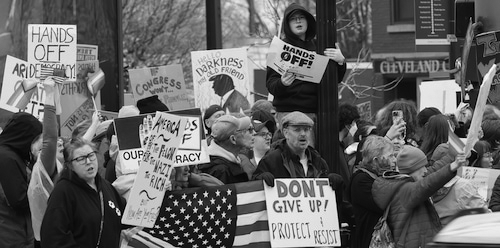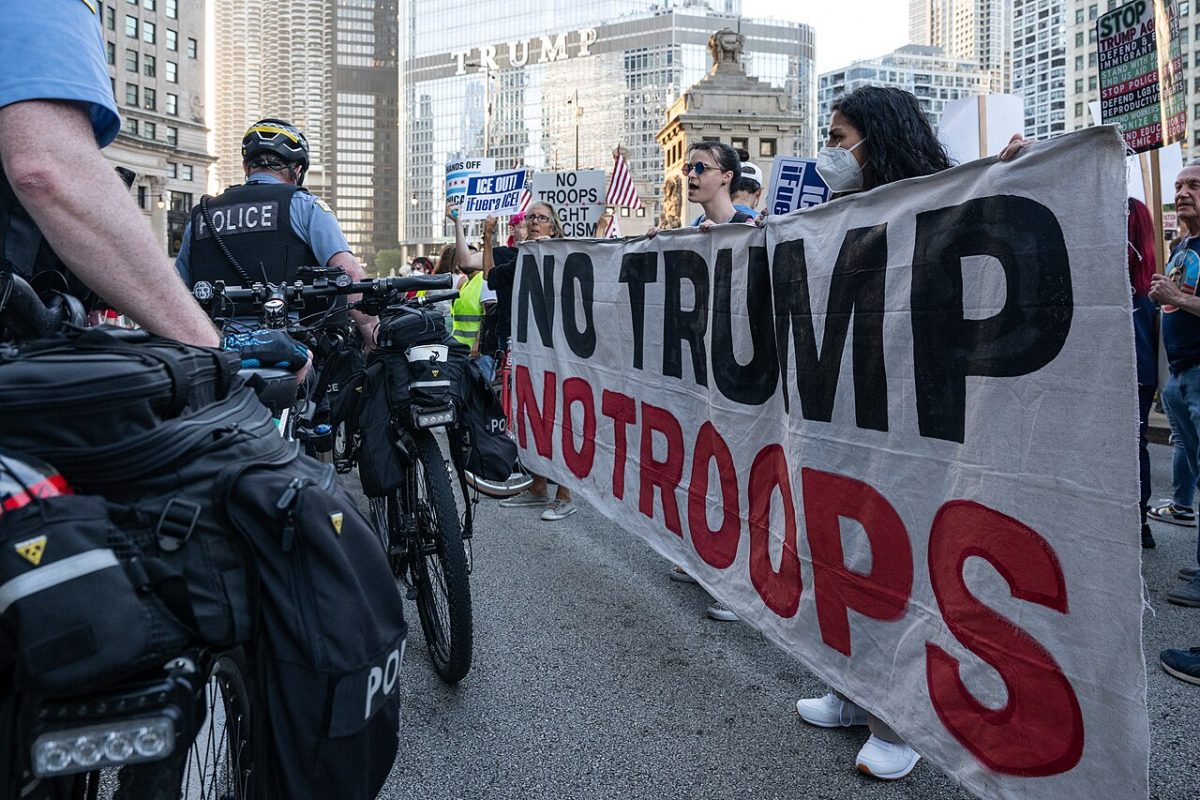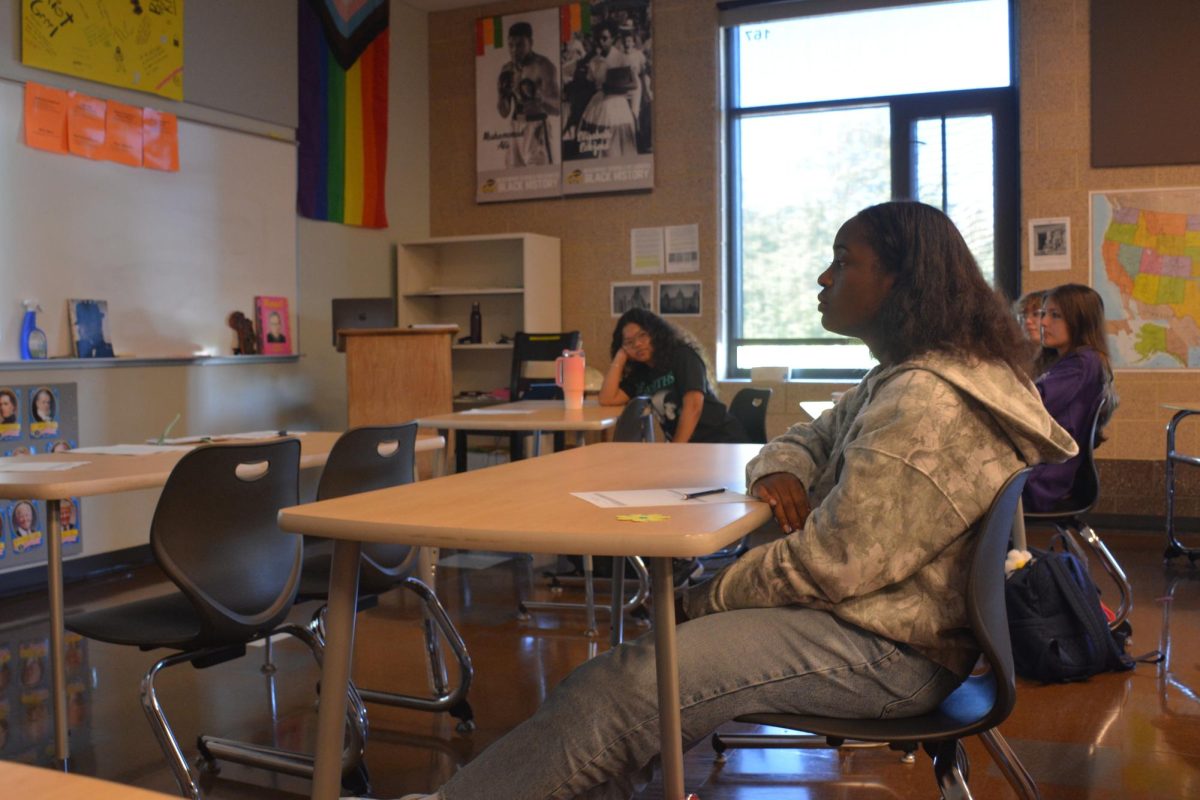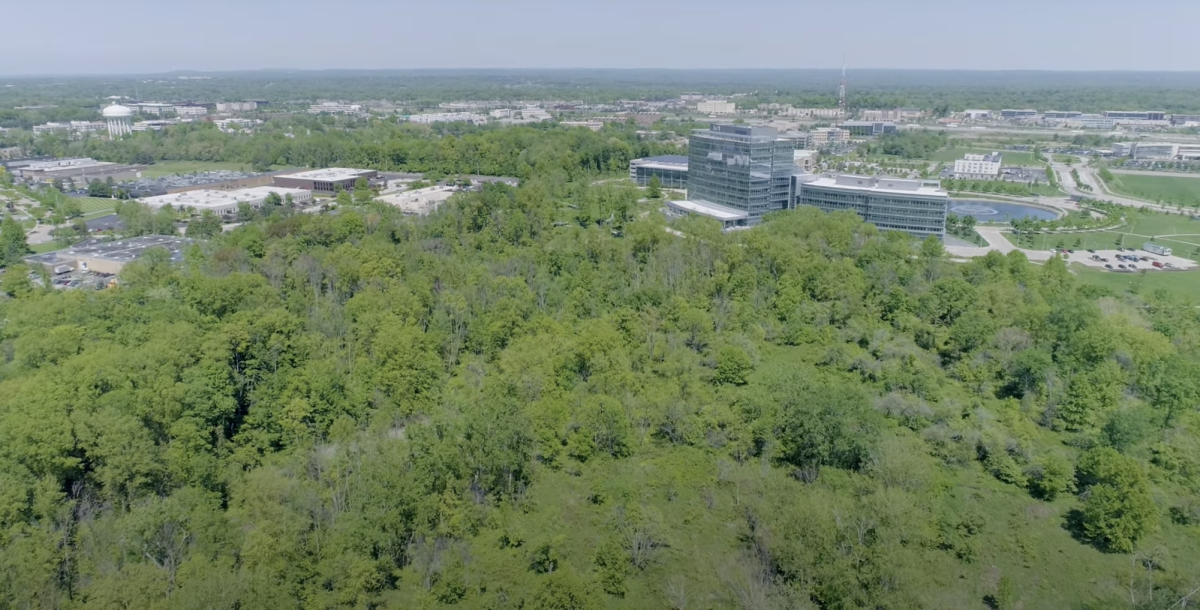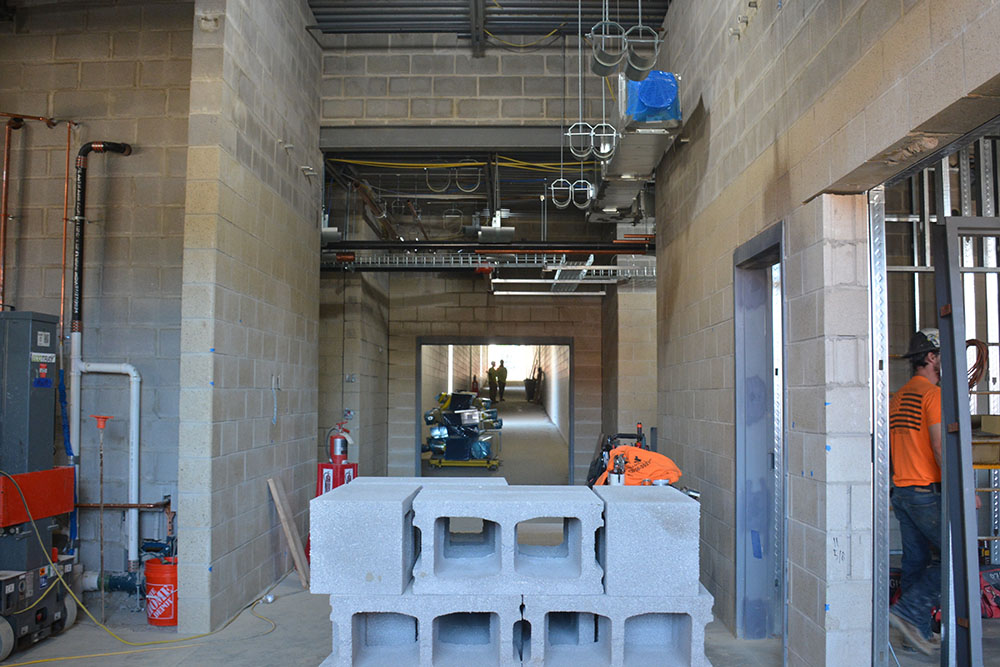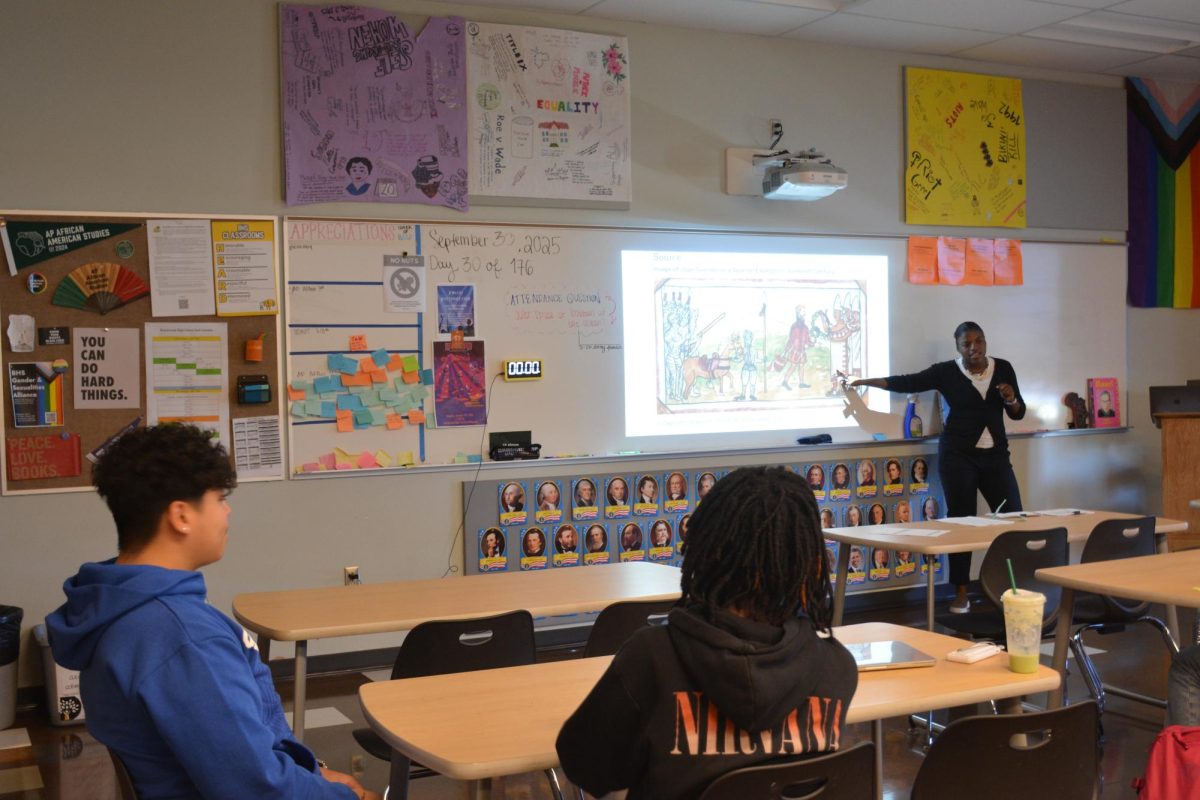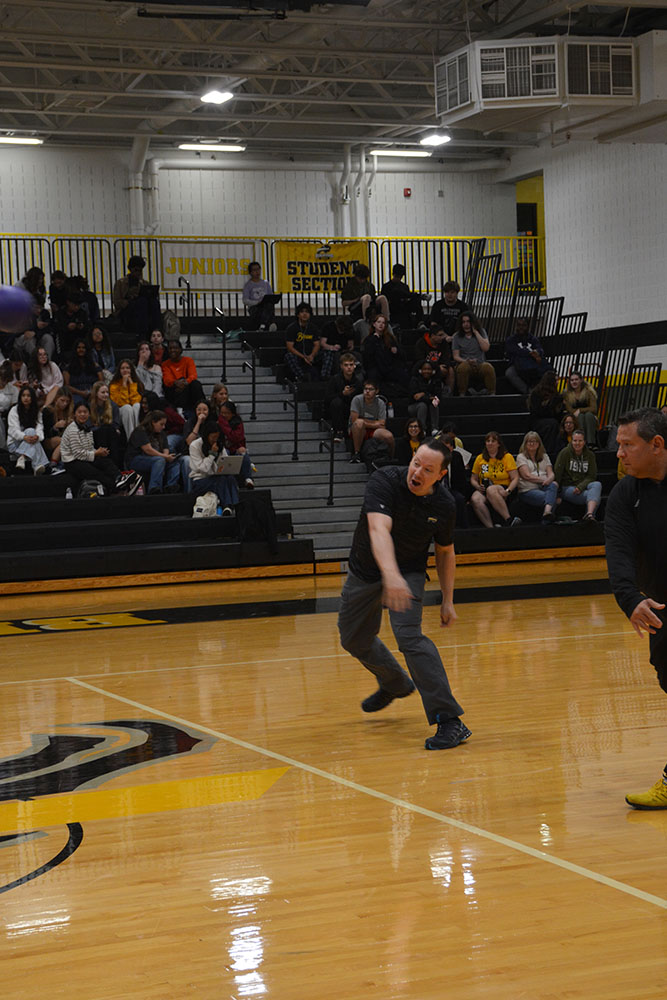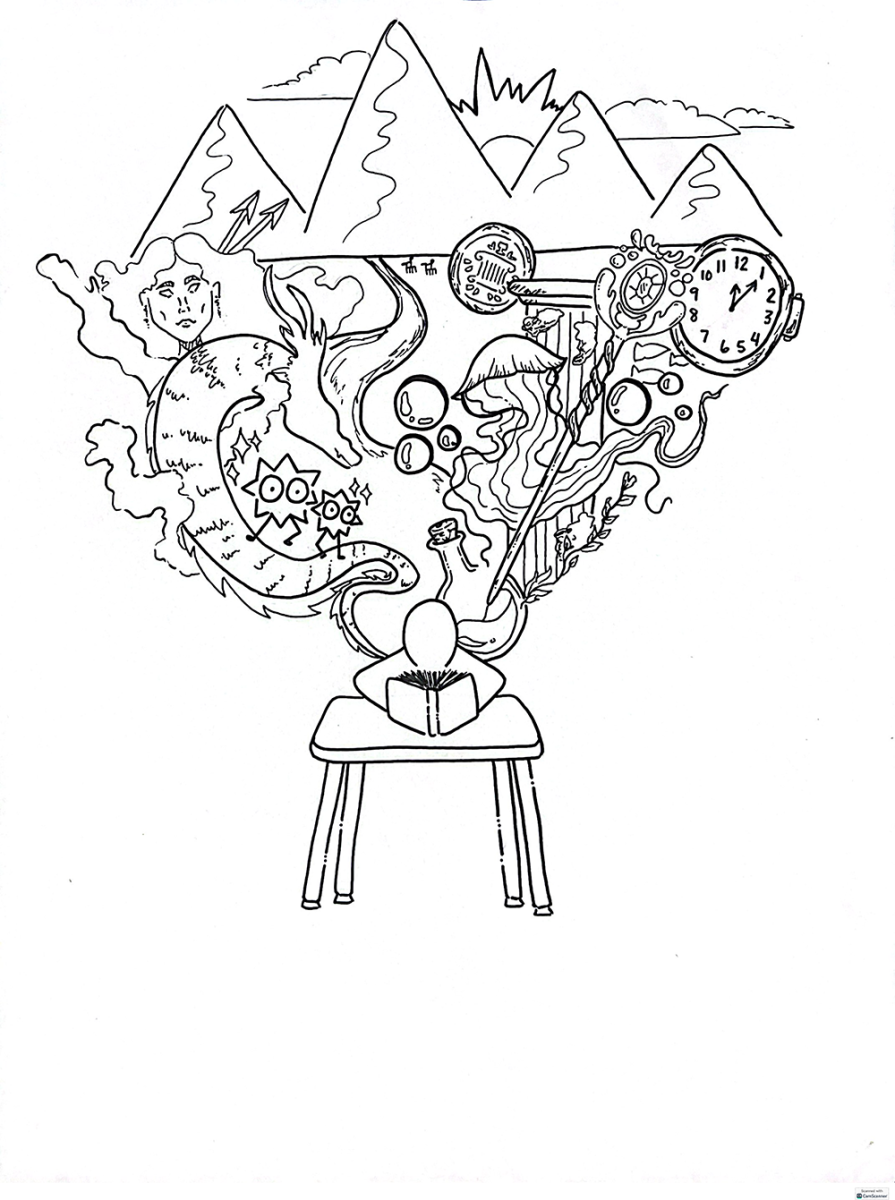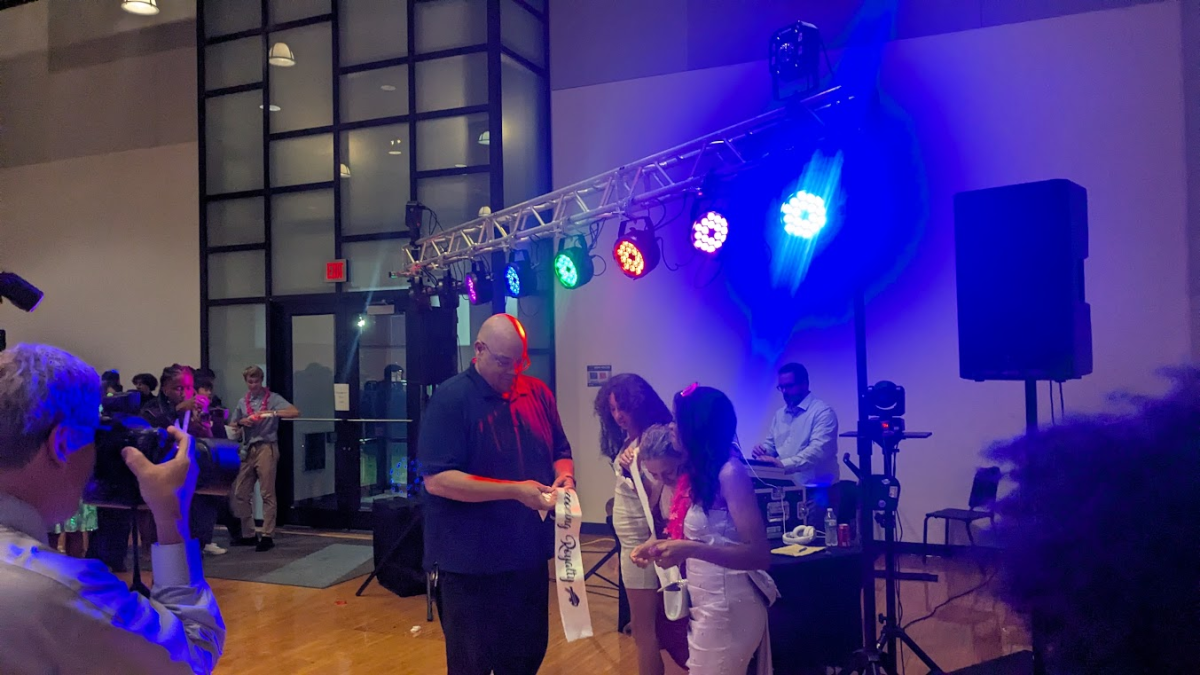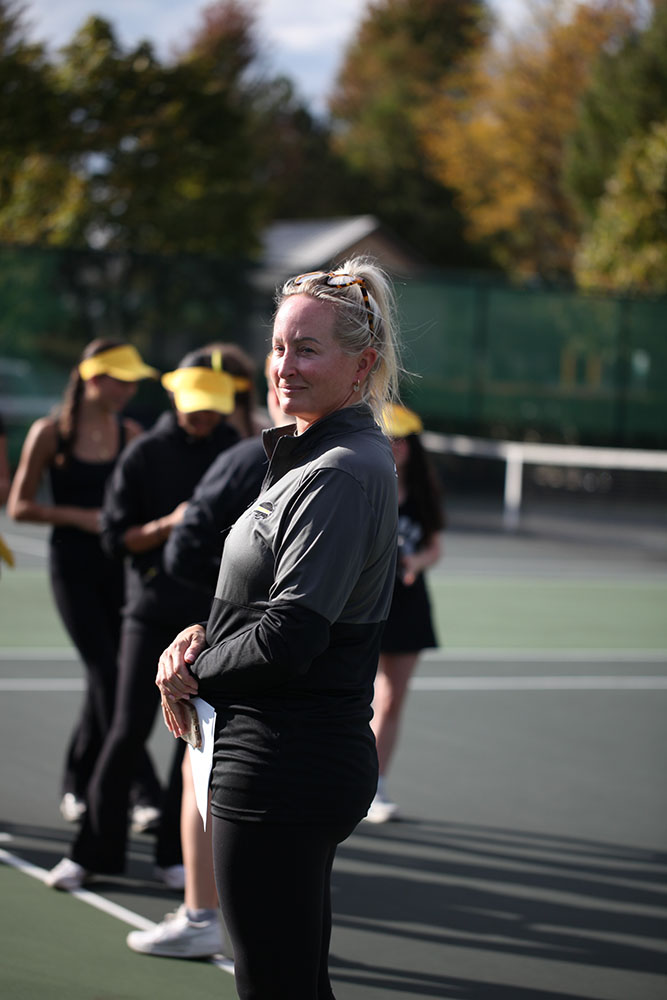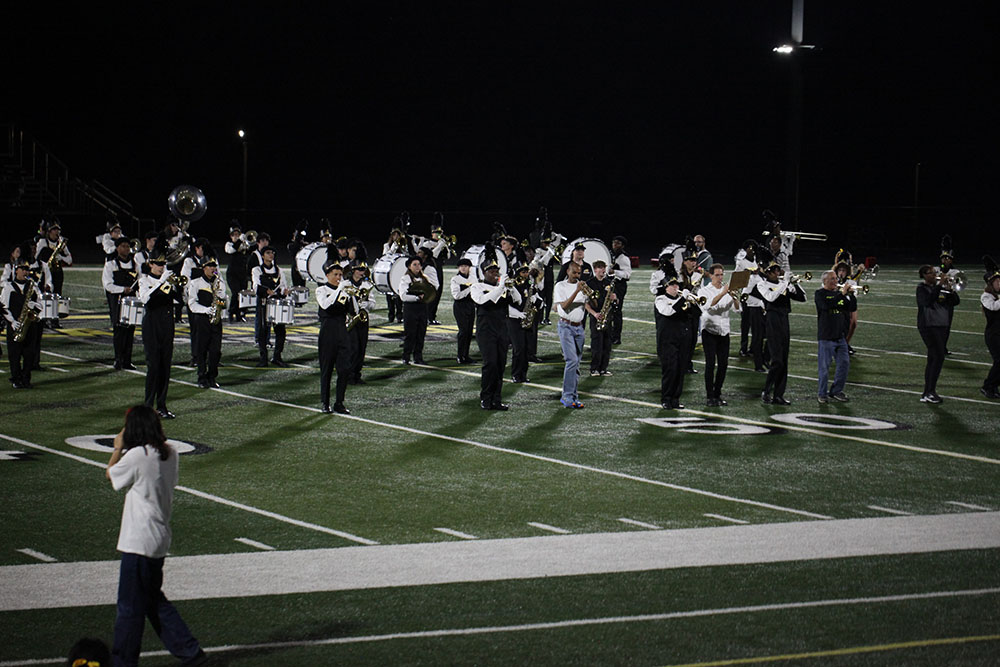Cleveland joined more than 1,100 cities across the country on Saturday, April 5 in the “Hands Off!” protests, a coordinated national response to recent policy decisions by President Donald Trump and Elon Musk.
According to junior Lauren Nagy-Oleski, the term ‘Hands Off’ applies to many of the policy changes pushed through by the current administration.
“‘[Hands Off]’ means hands off our future, hands off Medicaid and Medicare, hands off social security, hands off trans rights, hands off immigrants and more,” she said.
Nagy-Oleski said she joined the protest after seeing a flyer the day before.
“We’re still mad, but looking at how many people showed up to express their deep dissatisfaction with the government shows that we aren’t alone in this fight,” she said. “I stood on the light pole chanting and cheering with my whole chest.”
Another Beachwood student who also attended the protest, junior Lorena Tovanche, echoed the sense of urgency.
“It impacts us because this is our future,” she said. “It’s our new reality. And if we don’t want it to be this way, then we have to do something about it. We can’t just sit around complaining about it. We have to get off our butts and put in the work.”
The Cleveland event, held in the city’s Ohio City neighborhood, drew an estimated 1,000 to 1,200 participants despite steady rain and chilly weather, according to organizers and coverage from Signal Cleveland.
The protest was part of a broader “Day of Action” led by over 60 national advocacy organizations, including MoveOn, Working Families Party, Service Employees International Union (SEIU) and the American Federation of Teachers.
According to Axios, the protests collectively mobilized over one million people nationwide, marking one of the largest coordinated political demonstrations in recent years.
In Cleveland, demonstrators gathered at the intersection of West 25th Street and Lorain Avenue, lining sidewalks with signs protesting recent proposals to cut Social Security, restrict immigration and reduce funding for education and climate initiatives.
Some participants also called attention to concerns over academic freedom and suppression of student speech on college campuses.
“People brought signs from home that said things like ‘I’ve seen better cabinets at Ikea’ and ‘let’s 1789 France before they 1938 Germany,’” Nagy-Olseki said.
Reporting from Ideastream Public Media indicate that organizers emphasized a ‘big tent’ approach, welcoming groups from a variety of social justice and labor movements. Cleveland’s local rally included representatives from progressive faith communities, environmental advocacy groups, and public sector unions. Volunteer marshals helped direct crowds and maintain safety.
Northeast Ohio saw multiple protests in coordination with the Cleveland event. In Akron, more than 500 demonstrators lined West Market Street at Hardesty Park, according to Akron Beacon Journal. Cuyahoga Falls and Strongsville also hosted rallies, with estimates ranging from several hundred to over a thousand participants across the region.
While Cleveland’s demonstration remained peaceful, the message was resolute. Organizers vowed to continue similar actions throughout 2025, especially in anticipation of the November presidential election.
The Cleveland protest may have been one of hundreds, but for many in attendance, it was a meaningful local expression of national urgency.



